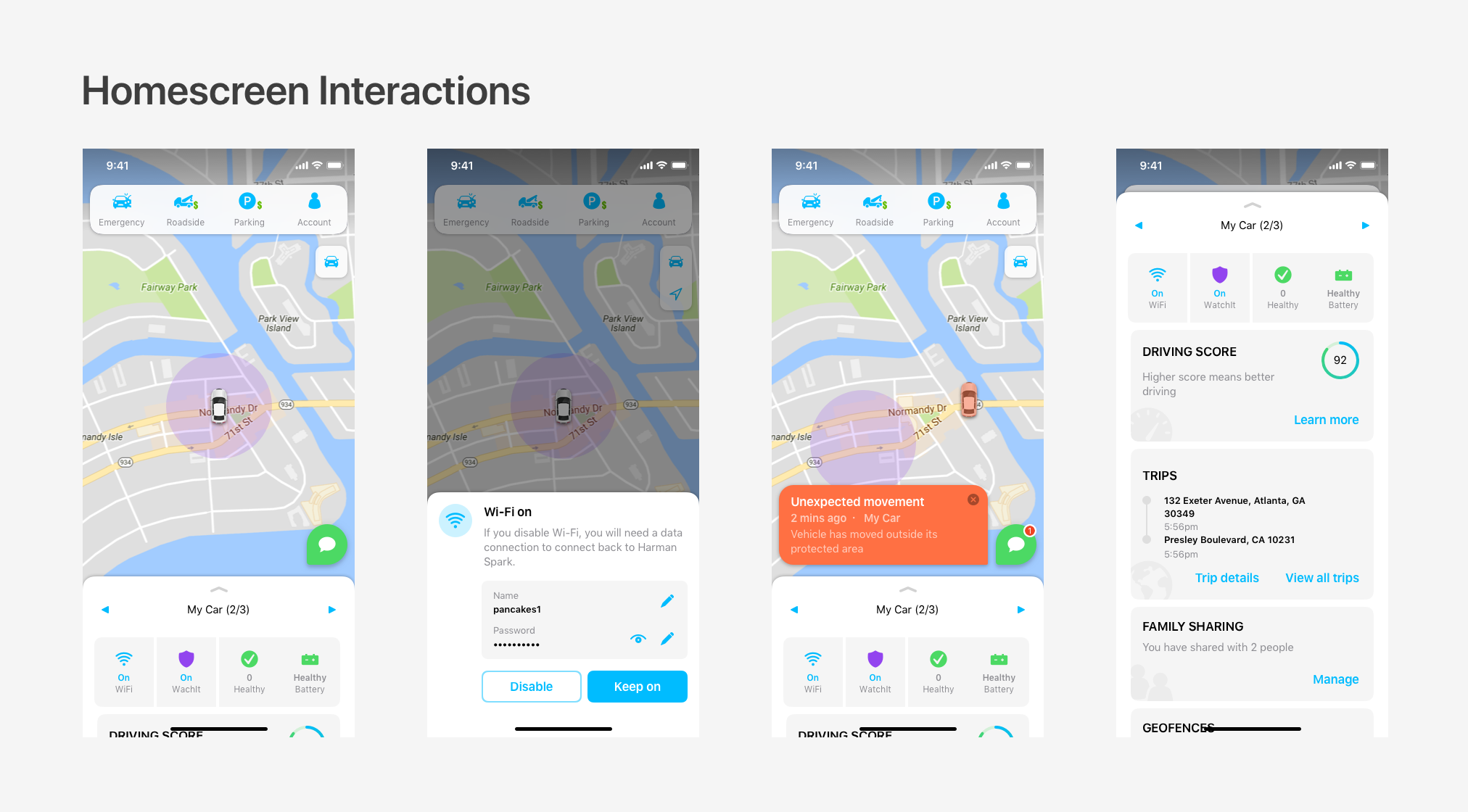Tantalum
Tantalum proved to be one of the most challenging projects for me, which is a good thing because it is only through challenges that one gets to learn and understand. Tantalum was hired by Harman, who in turn was hired by AT&T, the second-largest mobile telephony provider in the US, to create the app component of a connected-car solution. Through a small device that plugs into a car, this app is able to provide car diagnostics, emergency crash assistance, roadside assistance, parking spot search, and lots of other features.
As part of Novoda, my role was to work with multiple cross-disciplined teams to provide the design solution of this product for iOS and Android, from scratch. I worked among two other product designers to understand the vision of the product, work closely with client stakeholders to lay down the vision into a viable product — while taking into account technical capabilities and available time — collaborate with other designers on the customer’s experience, as well as developers to finally implement the solutions.
Fresh beginnings
The beginning months of the project were very much about transforming a concept into specific and tangible parts of a product experience. Due to the fast-paced nature of this project, we spent our time doing stripped-down versions of Google’s Design Sprints. Together in a small cross-disciplined team, we took into account technical specifications and client requirements to quickly lay out possible solutions in sketches and wireframes. Then, choosing a winner design via voting, we would take the high-level concept of that solution and prepare it for further, more focused improvement.
Defining a wide range of features
Once the majority of the app was defined, each designer owned certain parts of the app. For each feature, I worked together with stakeholders to understand client requirements, as well as product owners and developers to recognise technical limitations and specifications, in order to define the user experience of that feature.
Most of the time, I start wireframing a feature with just paper and pen. This allows me to quickly explore different options which might solve the problem more effectively, without paying much attention to unnecessary detail. I used these wireframes to frequently get feedback from the team, so that in case of an error or technical difficulty, it would be quick to resolve.
A prominent aspect of this project was the very strict time limitations we had, which didn’t allow for us to test our solutions. Unfortunately, we weren’t given the possibility to do full-fledged user testing, so our tests were limited to simple prototypes tested with people in the office. Once a wireframe was approved by the wider team, I moved on to interface design.
Bringing the app to life
Together with the other product designers, we set up a framework for how the brand was going to be incorporated into the app and filled in the gaps with our own ideas. For the first time, I started using Abstract, a version control system based on Git, to keep track of the design team’s files. As a partial Android developer, I was most excited about this tool and came up with a process of documenting and reviewing our work through the Git system.
The interface design phase also involved frequent syncing with developers, to make sure that my interface solution was possible to implement in code without much difficulty, often offering my own ideas from my background as an Android developer. We used Zeplin as our preferred way to share specs and assets.
Leading the assembly of a design system
A special part of this project was that this app was to be made into a white-label solution, something I had never done before. White-label apps absolutely need a solid design framework to work with, so I started leading the assembly of a Design System. I strive to make the developer’s job as easy as possible, and I believe in making design processes as similar to development as it can be, so I began by consulting with developers on a framework that would work for both disciplines. Soon I came up with a guideline on element assembly, naming conventions, constraints, pipelines, and a plan to start building the design system.
Over the course of a couple of months, we successfully built an extensive design system that covered all design resources, in the process decluttering our app, making it ready for a white-label treatment, massively simplifying our editing process, but most importantly achieving an almost perfect reflection of the app implementation in code. This allowed the designers and developers to speak the same language, allowing for smoother collaboration.
Conclusion
At the end of our involvement with Tantalum, we had built an app in three different brands and provided them with a design system that allowed for quick and easy production with other brands. In the process, I became extremely familiar with design systems, enough to create my own framework for the construction of one, and learn a whole lot about what goes into making a white-label app and how as a designer I can enable developers to work with a design system and simplify collaboration between the two disciplines. What I value the most from this project was learning how to understand and define client needs, effectively communicate with stakeholders, and advise on design strategy.





